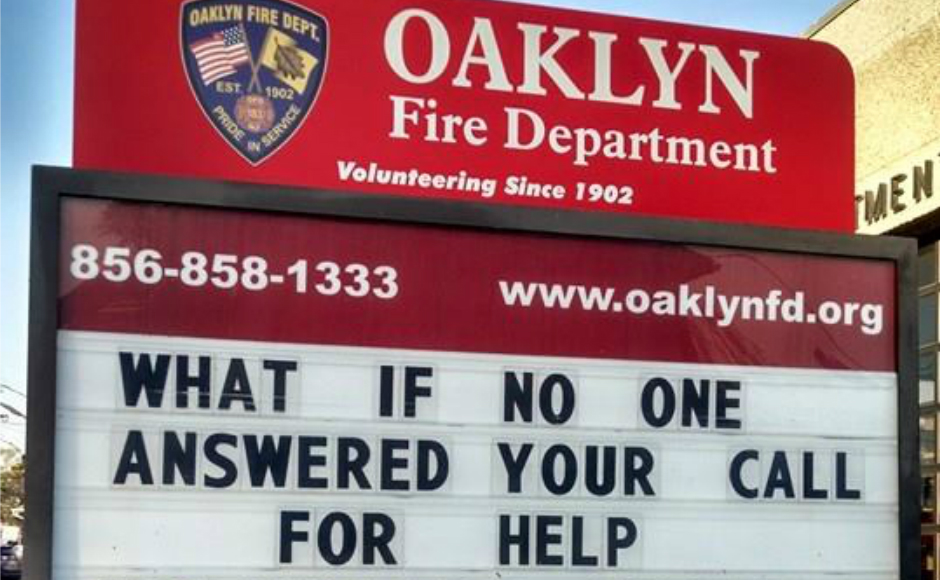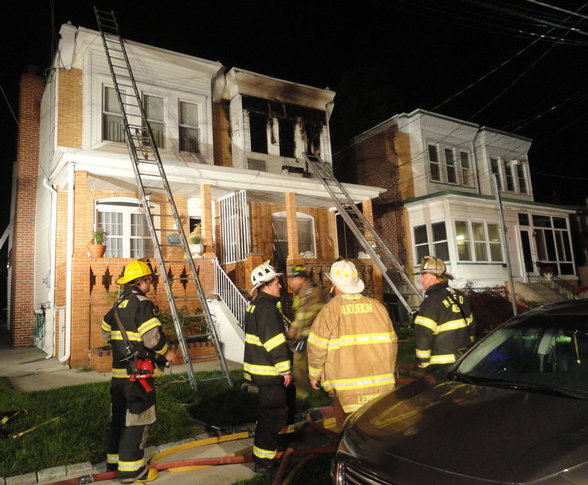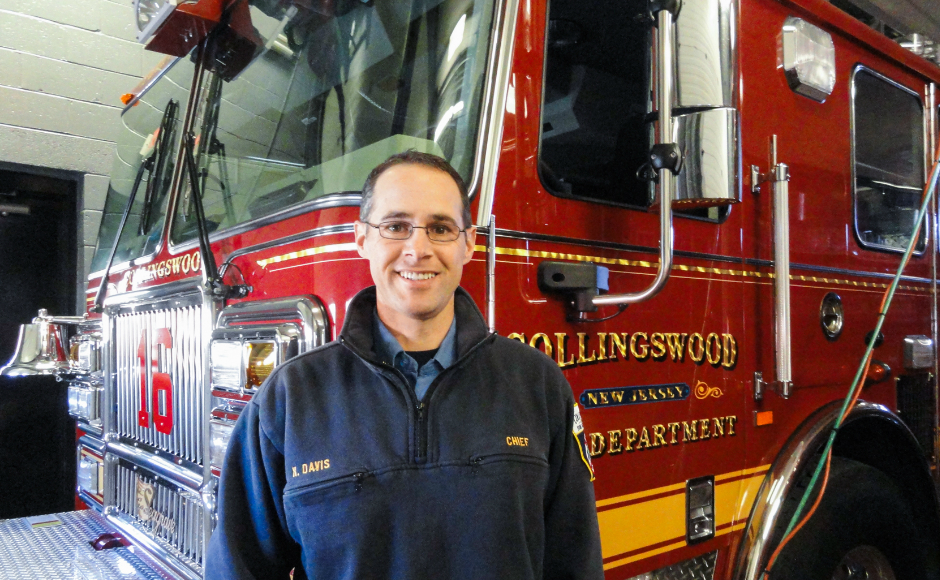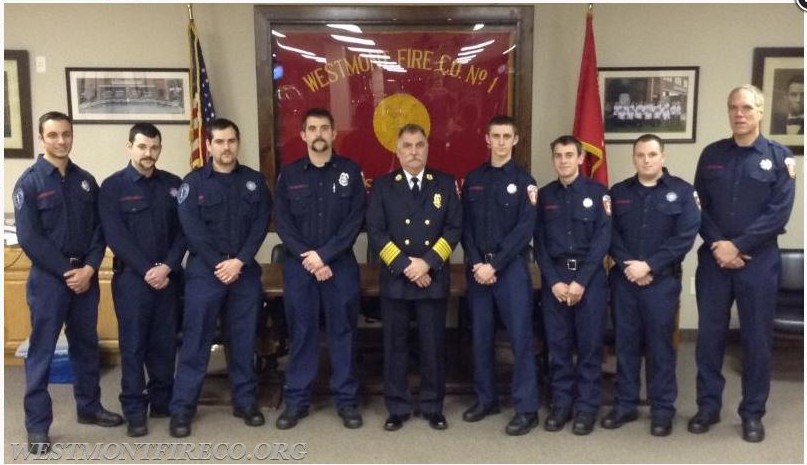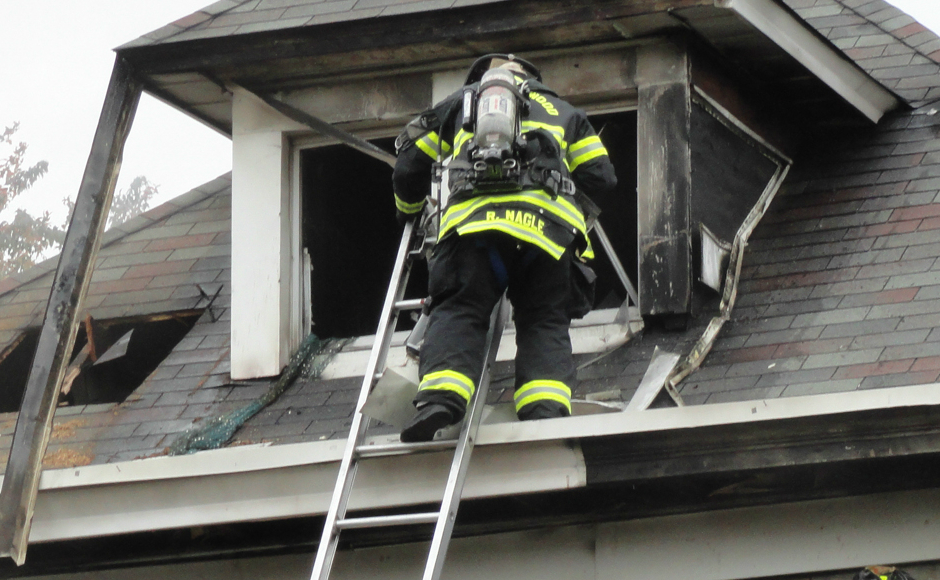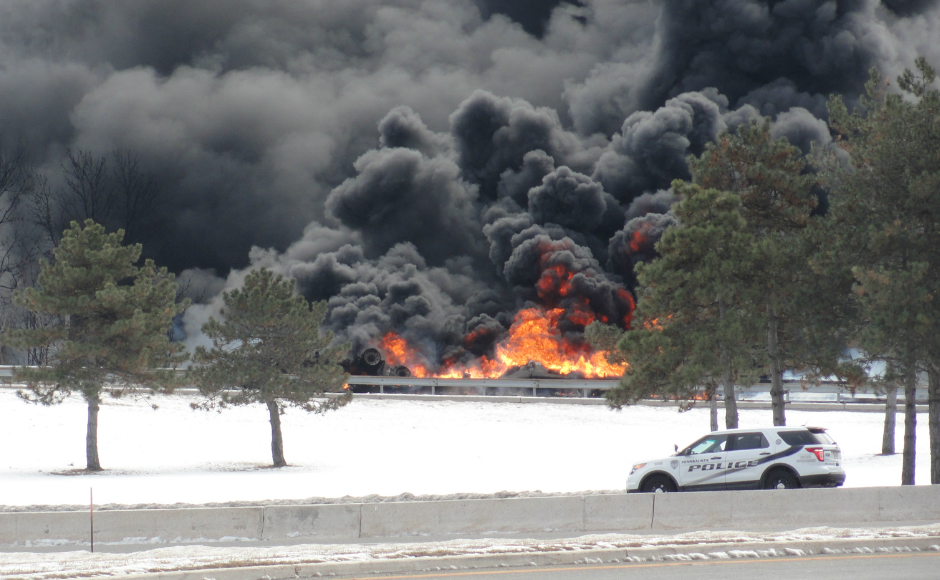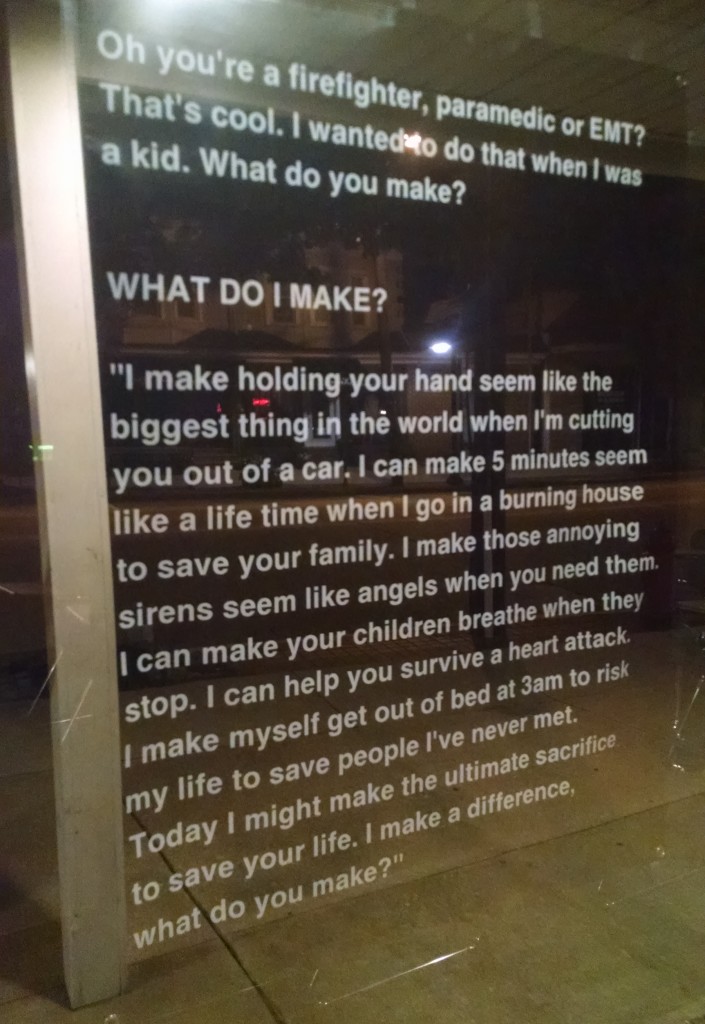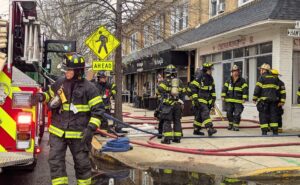Overworked, overcommitted parents and divided families means volunteer fire departments may find their ranks thinner than the volume of calls they have to answer.
By Matt Skoufalos
Last May, the marquee outside the Oaklyn Fire Department (OFD) summed up the question nicely in just two lines.
“WHAT IF NO ONE ANSWERED YOUR CALL FOR HELP,” it read.
“VOLUNTEERS NEEDED.”
According to OFD Chief Scott Cairns, the message was more than just a conversation starter. Volunteerism at local fire departments in many small communities is on the decline.
Time constraints from parenting duties, lengthy work weeks, or the need to hold down multiple jobs are all cutting into the hours that would-be firefighters have to dedicate to the cause.
“Many operate with just a core group of guys or are slowly converting to paid personnel like Collingswood and Gloucester City,” Cairns said. “A town like Cherry Hill is fully paid. It’s just very hard in today’s day and age with two-income families, or people working multiple jobs, to find the time to dedicate to the fire service.”
In Oaklyn, Cairns oversees a roster of some 30 active members, which he said is a good number, “but also deceiving” because the full crew isn’t on call all the time. It takes four to six firefighters to staff an engine, so to combat that shortfall during the weekday work hours, smaller departments respond to incidents in neighboring towns under mutual aid agreements. For example, Oaklyn shares its workload with firefighters from Audubon and Mt. Ephraim.
Together, all three provide adequate coverage for the communities they serve, but Cairns can also recall a time when Oaklyn operated two, separate, volunteer fire companies with some 30 members each.
“It’s just a different era,” he said.
‘Training never really stops’
In addition to juggling multiple jobs, many prospective volunteers are turned off by the time investment required before they can suit up with their departments, said Collingswood Fire Chief Keith Davis.
Collingswood Fire Department (CFD) is staffed by a combination of career (paid) and volunteer firefighters, but the training requirements for both are identical.
“[The state] added hours to the mandatory training and the level of certifications that you have to have because they don’t distinguish between volunteer and career [firefighters],” Davis said. “We’re all doing the same job, when it comes down to it.”
Completing the Firefighter I course at the Camden County College Fire Academy is about a five-month process totaling 140 hours, Cairns said—but that’s just for the basics. The academy also offers elective coursework, and firefighters are re-certified in certain training annually.
“Every year you have to meet your qualifications, whether it be CPR, HAZMAT, Right to Know, Incident Command System, the certifications they have to do to run the air packs,” Davis said. “Then you have to keep up with that and learn the advanced training: vehicle extrication, rope rescue. It’s a big commitment of hours.”
In addition, departments may also require further in-house training for their members, which adds to the load.
“Training never really stops,” Cairns said. “We have department drills on Monday nights, plus there are training sessions that officers conduct with the guys on off-nights during the week.”
Then there’s the actual job. The on-call life of a firefighter is one of constant disruption, Davis said, with work, plans, and dinners interrupted by the sound of “tones dropping,” the in-house radio frequency that dispatches first responders. Collingswood handles 1,200 fire and 1,800 ambulance calls annually, of which department members are expected to respond to a certain percentage, Davis said. That means that after answering a call for service in the middle of the night, many volunteer firefighters will return to their homes to try to get back to sleep before waking up again to work a day job.
“There’s just not that time any more between the extra jobs you’ve got to work and the time you want to spend with your family,” Davis said. “It’s tough to do.”
Start ’em young
In an effort to motivate recruitment, Davis said CFD has found great success with its junior explorer firefighters program, which invites teenagers to volunteer as auxiliary members of the department in a limited role.
Unlike their adult peers, the teens don’t face as many competing demands on their time.
“We get them young, we train them, and they don’t necessarily have that extra time commitment other than school,” Davis said. “Hopefully they stay on when they turn 18, and become a full-time firefighter.”
Joe Piscopio, President of the Westmont Fire Company (WFC) in Haddon Township, said that the explorer program is “huge” for his department. Not only do the children of many volunteer firefighters participate in the program, but so do their friends, which yields an added pool of potential future firefighters.
“Whether they stay or not, they’re trying to learn some things about the fire service and get some basic first aid training,” Piscopio said. “One of our captains, Dan Devitt, started out as an explorer here 15 or 20 years ago. It’s like the minor leagues.”
Of course, the explorer program also capitalizes on the bloodlines that run deep in any fire department. Piscopio’s son is an explorer; so were the sons of WFC Chief John Medes.
“There are so many generations of different families that are involved in our department, and that’s gone on for quite some time as well,” Piscopio said. “We have third-and fourth-generation members that, had it not have been for their ancestors, we certainly wouldn’t have the interest we have.”
“A lot of our kids hang out at our fire house, they come up, they get to see the fire trucks regularly, and they develop a love for it,” Davis said. “That’s definitely a hook, but we have to expand past that and try to recruit people who don’t know anything about the fire service.”
‘If you understand, no explanation is necessary; if you don’t, no explanation is possible’
The reason so many families continue to commit to the fire service is because they, more than many others, understand the dedication and sacrifice required of volunteers.
Cairns grew up in Haddon Township with a father who belonged to the Westmont and Oaklyn fire departments, and a mother who was a Westmont EMT. Today, his crew hails from a variety of careers: law enforcement, healthcare, food, information technology. Since they aren’t in it for the financial rewards, volunteers participate for different reasons.
“It’s a great way to meet new friends and build lifelong relationships,” Cairns said. “We have a softball team, participate in other town events, and perform various fundraisers throughout the year.”
“It’s the camaraderie,” Davis added. “It’s the sense of that added family. Most of the people that volunteer in the fire service, that’s what they get out of it. Being part of an organization that is a part of the community.”
On any given night in Westmont, Piscopio said, the station parking lot is likely to be filled with firefighters’ cars, even if there’s no event scheduled. That’s because friendships that have been formed in the department offer a comfortable atmosphere for the volunteers to connect over coffee and conversation.
“It’s one of those things that if you understand, no explanation is necessary, and if you don’t, no explanation is possible,” he said.
Westmont is one of the only departments in the area that might buck the volunteering trend, Piscopio said. Its 45 active members include five of the seven recruits who graduated the county fire academy last year—one moved away and another entered medical school—and the fire house is sending another three through the program who are expected to graduate in December.
“We are very fortunate,” he said. “You can’t have too many volunteers.”
Piscopio also pointed out that the needs of a department aren’t just limited to active-duty firefighting or EMT duties. Retired WFC captain Frank Jackson IV may not climb aboard an engine anymore, but he’s at the station daily to help with the tasks “most people don’t want to do,” Piscopio said.
“There’s no glory behind the paperwork, but it has to be done,” he said. “Otherwise, that stuff can slip through the cracks, and you can’t have that.”
Lest anyone believe that a firefighting career is any kind of windfall, Davis pointed out that the annual starting salary of a Collingswood firefighter is $32,000. The job includes a pension and benefits, he said, “but considering what you’re doing, and the hours—it’s a minimum of a 54-hour work week—they’re out there risking their lives.
“It’s definitely a special breed,” he said. “I think after 9/11, a lot of volunteers took a step back and said, ‘I really could die doing this job.’ We see a lot of bad stuff, too, that affects you mentally, and you’re risking your life. But there’s a lot of people out there and they’re willing to make those sacrifices.”
Piscopio points to another sign, one that hangs in the front window of the WFC training building. It relates an imaginary dialogue that asks a first responder to answer the question, “What do you make?”
“I make holding your hand seem like the biggest thing in the world when I’m cutting you out of a car,” it reads.
“I can make five minutes seem like a lifetime when I go in a burning house to save your family. I make those annoying sirens seem like angels when you need them. I can make your children breathe when they stop…
“I make myself get out of bed at 3 a.m. to risk my life to save people I’ve never met. Today, I might make the ultimate sacrifice to save your life. I make a difference.”
For more information about volunteer firefighting visit the Collingswood Fire Department, Oaklyn Fire Department, or Westmont Fire Company No. 1 websites.

